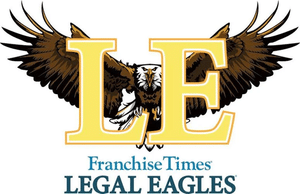Ways to Save a Sinking Franchise
Even the best franchise systems have weak spots. Maybe you have a franchisee who doesn’t communicate well, or one who won’t participate in special programs and offerings. Some franchisees won’t participate in advertising, fail to report sales and become delinquent with fee obligations.
These frustrations are all too common and are usually the result of a financial issue. If both the franchisee and the franchisor are willing to put in hard work, there are options for fixing these faults. This process is called a work out, and this occurs when a franchisor and franchisee come up with an out-of-court plan to fix or mitigate a failing business. It could include a plan where the franchisee’s relationship is restructured, or in some cases, a plan where the franchisee exits the franchise.
Pros and Cons of Work Outs

When handled carefully, there are several advantages to pursuing a work out. Work outs tend to be less expensive than filing for chapter 11, they can maintain customer confidence, and they help preserve a positive franchise morale.
You do need to tread carefully, because things could go wrong, and a work out may not be the best choice for you. A failed work out can result in a host of legal headaches, and you may be wasting your time extending the franchisee’s inevitable failure.
Selecting the Best Work Out Plan
If you decide that the pros outweigh the cons for your situation, you will need to select the type of work out that makes the most sense for you. A common type of work out is called forbearance. This work out allows the parties to work together to save the franchise relationship. Typically, the franchisor makes arrangements to allow the franchisee to pay off debts over time.
Other common work outs are called exit strategies, and their goal is to allow the franchisee to exit from the franchise system with the investment intact. In some cases, they also may allow the franchisor to receive full fees owed and retain the unit in the franchise system. Exit strategies are often about finding the best way to mitigate the parties’ losses.
A third common work out is called a Collective Creditor Compromise, or a Composition Agreement. This method is faster and less expensive than bankruptcy that allows the debtor to pay creditors a percentage of their claims in exchange for the rescinding of those claims.
A Strategy for Reading Your Documents

If it helps, you can think of the Franchise Agreement as the “lease” for the trademark and system, while the FDD is, in part, the marketing material. When viewing your FDD and Franchise Agreement through this prism, prospective franchisees can make a more informed decision.
What Should You Do Next?
If you have a failing franchise on your hands, you have some important decisions to make. You need to decide if the franchise is worth saving at all, and then you need to discern the best work out strategy for your situation.
If you need help choosing the best method, a call to the offices of Spadea Lignana is a great place to start. We have experience on both the business and law side of franchising, and our expert advice is just what you need to make the most of a sinking unit.







